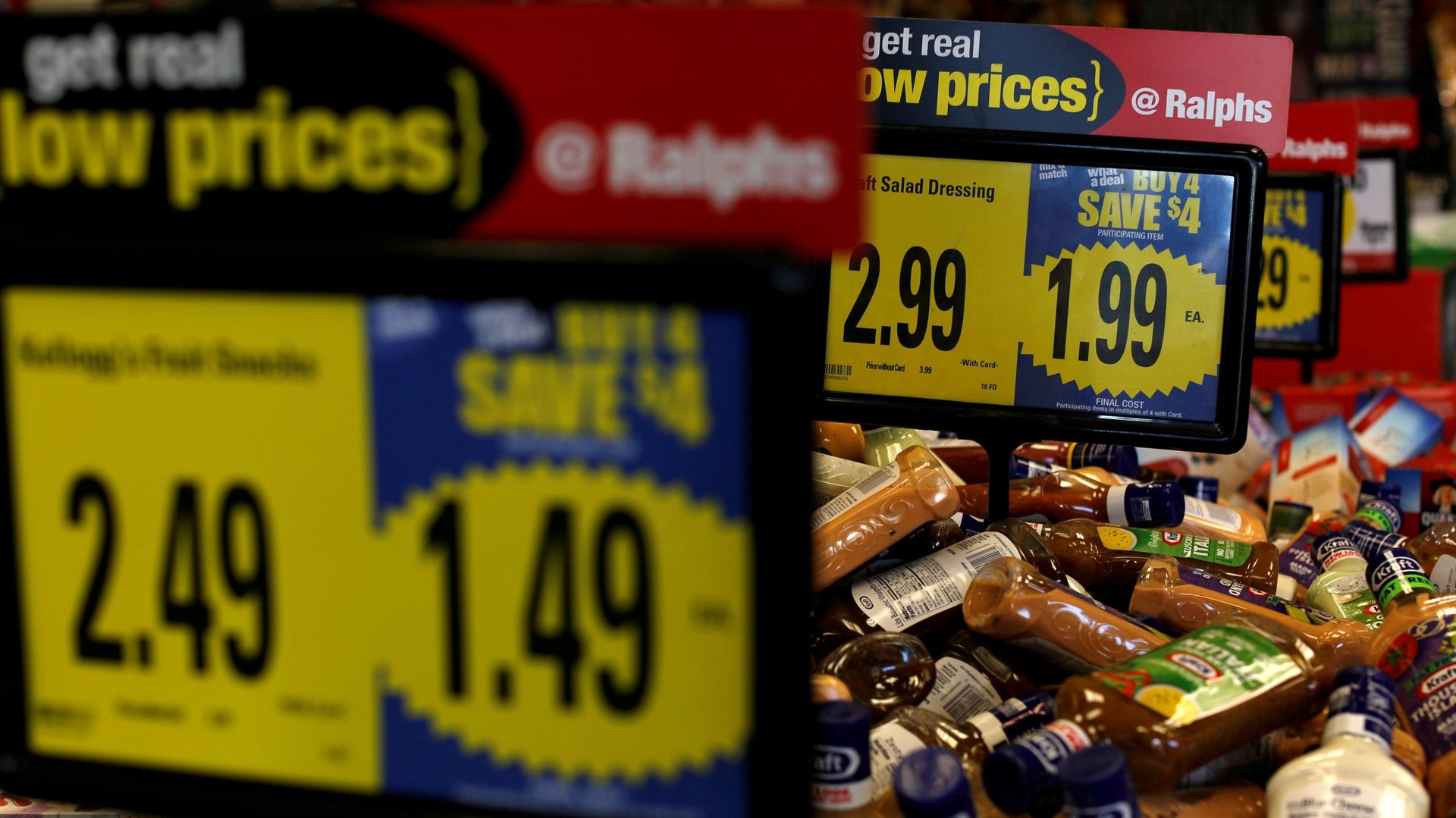The $22 trillion Treasury bond market is bracing for a jump in inflation
The $22 trillion market for US government bonds is getting ready for the highest inflation in more than a decade.


The $22 trillion market for US government bonds is getting ready for the highest inflation in more than a decade.
Bond investors are skittish about rising prices because they eat away their fixed returns. Institutional investors are betting inflation will rise to about 3% in five years, according to the so-called breakeven rate, which is the difference between the five-year Treasury yield and five-year inflation-indexed securities. That’s the highest forecast of price increases in more than 10 years, according to that measure.
After insisting that rising inflation is transitory, US Federal Reserve chair Jerome Powell has acknowledged that supply chains have been crimped for longer than expected, which could cause prices to rise faster than anticipated. Others are even more alarmed—former Treasury secretary Larry Summers said the US is more at risk of losing control of inflation than at any time during his career. The former chief economist at the World Bank said breakeven rates are part of the reason for his concern.
“People are finally realizing that inflation is actually higher, and will be higher, than the policymakers have been saying,” said Campbell Harvey, an economist at Duke University who pioneered the use of the yield curve as a forecasting tool. “The policymakers have worked really hard to talk down inflation, saying it’s transitory and stuff like that. A casual look at the data suggests a much different and more complex story.”
Why is inflation rising?
Consumer prices in the US jumped more than 5% in September from a year earlier, a bigger increase than expected. Economists like Harvey and Summers say everyday people and businesses are experiencing headier inflation than the consumer price index (CPI) would suggest. Some measures of apartment rental prices have jumped by double digits, for example, while home prices have soared nearly 20%. “The inflation I face is different than the inflation you face,” Harvey said. “It’s often the case that the people that can least afford it get hit really hard.”
Officials like Fed chair Powell are in a bind. To help workers and businesses cope with the coronavirus outbreak, Congress spent trillions of dollars and the central bank has gone out of its way to make borrowing and capital plentiful. As the economy revs back up, it’s been hit with shortages in everything from housing and microchips to available workers. Businesses are raising prices (if they can) as demand outpaces supply.
Now that inflation fears are growing, the Fed has to balance a surprising spike in prices against the risk of snuffing out growth in jobs and wages. Tightening interest rates too soon—the main tool for combating inflation—can worsen wage inequality, according to the Economic Policy Institute research. The non-profit think tank’s economists say incomes for women and minorities have taken the brunt of that overreach in the past.
Some economists fear rising stagflation risks
In the meantime, some economists worry the US could face the worst of both worlds—slowing of economic growth and rising inflation, known as stagflation. Gross domestic product grew 2% in the third quarter, a marked slowdown from the 6% expansion in the two most recent previous periods. Infections from the Delta variant of Covid-19 and fading government assistance were a drag on the economy.
“We’ve been stuck in this low growth mode for many years,” Harvey said. “Yeah, you start talking about stagflation.”